 W
WThe Association of Mineworkers and Construction Union (AMCU) was formed in Mpumalanga, South Africa, in 1998 as a breakaway faction of the COSATU-affiliated National Union of Mineworkers (NUM). It was formally registered as a union in 2001. According to Mining Weekly, the union sees itself as distinct from NUM in that it is "apolitical and noncommunist".
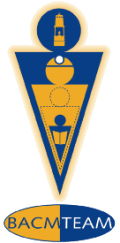 W
WThe British Association of Colliery Management – Technical, Energy and Administrative Management (BACM-TEAM) was a trade union in the United Kingdom. It merged with Prospect in 2014.
 W
WThe Butte Miners' Union, formerly known as the Butte Workingmen's Union, was formed in 1878 as a reaction to working conditions in the mines of Butte, Montana.
 W
WThe Construction, Forestry, Maritime, Mining and Energy Union is Australia's main trade union in construction, forestry, maritime, mining, energy, textile, clothing and footwear production. The CFMMEU is affiliated with the Australian Council of Trade Unions, with the Australian Labor Party and with the World Federation of Trade Unions.
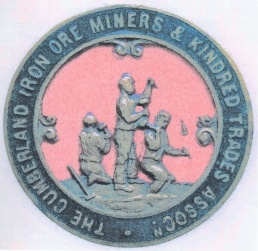 W
WThe Cumberland Iron Ore Miners' and Kindred Trades' Association was a trade union, principally representing iron ore miners in the Cumberland area of North West England.
 W
WThe Derbyshire Miners' Association was a trade union in the United Kingdom.
 W
WThe Durham Miners' Association (DMA) is a trade union in the United Kingdom.
 W
WThe Federación Sindical de Trabajadores Mineros de Bolivia, FSTMB, is a labor union in Bolivia that represents miners. Bolivia's miners are commonly regarded as the country's most class-conscious workers. The FSTMB has played an important role in Bolivia's recent history.
 W
WPeople have worked as coal miners for centuries, but they became increasingly important during the Industrial revolution when coal was burnt on a large scale to fuel stationary and locomotive engines and heat buildings. Owing to coal's strategic role as a primary fuel, coal miners have figured strongly in labour and political movements since that time. After the late 19th century coal miners in many countries were a frequent presence in industrial disputes with both the management and government. Coal miners' politics, while complex, have occasionally been radical, with a frequent leaning towards far-left political views. A number of far-left political movements have had the support of both coal miners themselves and their trade unions, particularly in Great Britain. In France, on the other hand, coal miners have been much more conservative.
 W
WThe IG Bergbau, Chemie, Energie is a trade union in Germany. It is one of eight industrial affiliations of the German Confederation of Trade Unions (DGB).
 W
WThe Ladies' Auxiliaries (LA) of the International Union Mine Mill and Smelter Workers (IUMMSW) were women's organizations in the United States of America and Canada associated with local units of the IUMMSW. Women active in the Auxiliaries were the wives, daughters, sisters, and mothers of IUMMSW members. Women's organizations associated with trade unions in male-dominated industries have played a central role in labour struggles since the end of the 19th century.
 W
WThe Leicestershire Miners' Association was a trade union in the United Kingdom.
 W
WThe Miners' International Federation (MIF), sometimes known as the International Federation of Miners, was a global union federation of trade unions.
 W
WThe National Association of Colliery Overmen, Deputies and Shotfirers (NACODS) is an organisation representing former colliery deputies and under-officials in the coal industry.
 W
WThe National Federation of Miners was a trade union representing miners in France.
 W
WThe National Union of Cokemen and By-product Workers was a trade union representing workers involved in turning coal into coke at collieries in Great Britain. It survives today as the Cokemen's Area of the National Union of Mineworkers.
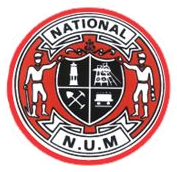 W
WThe National Union of Mineworkers (NUM) is a trade union for coal miners in Great Britain, formed in 1945 from the Miners' Federation of Great Britain (MFGB). The NUM took part in three national miners' strikes, in 1972, 1974 and 1984–85. After the 1984–85 strike and the subsequent closure of most of Britain's coal mines, it became a much smaller union. It had around 170,000 members when Arthur Scargill became leader in 1981, a figure which had fallen in 2015 to an active membership of around 100.
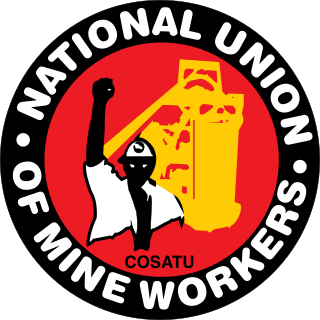 W
WThe National Union of Mineworkers (NUM) is a trade union in South Africa. With a membership of 300,000 it is the largest affiliate of the Congress of South African Trade Unions. It was founded in 1982 as a black mine workers union by Cyril Ramaphosa and grew rapidly, winning bargaining recognition from the Chamber of Mines in 1983.
 W
WThe National Union of Scottish Mineworkers (NUSW) is a trade union in Scotland, founded in 1894 as the Scottish Miners Federation. It joined the Miners' Federation of Great Britain, and in 1914 changed its name to National Union of Scottish Mineworkers. It survives as the National Union of Mineworkers.
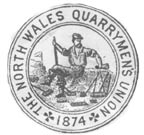 W
WThe North Wales Quarrymen's Union (NWQU) was a trade union in the United Kingdom. It was founded on 27 April 1874 at the Queen's Hotel, Caernarfon after a month of discussions between quarrymen from Dinorwic and other supporters. Initially the union was not led by miners but radical Liberals who later became supporters of David Lloyd George's Cymru Fydd It affiliated with the Transport and General Workers' Union in 1923, but maintained a separate identity until 1960.
 W
WThe Northumberland Miners' Association was a trade union in the United Kingdom.
 W
WThe Nottinghamshire Miners' Association was a trade union representing coal miners in Nottinghamshire, in England.
 W
WThe Oilfields Workers' Trade Union or OWTU is one of the most powerful trade unions in Trinidad and Tobago. Currently led by Ancel Roget, the union was born out of the 1937 labour riots, the union was nominally led by the imprisoned TUB Butler but was actually organised by lawyer Adrian Cola Rienzi. The union was established on July 25, 1937, and formally registered on September 15. The first meetings were held in Fyzabad, and the first official headquarters were established on Coffee Street, San Fernando.
 W
WThe Somerset Miners' Association or Somersetshire Miners' Association was a coal mining trade union based in the Somerset coalfield, Somerset, England.
 W
WThe South Wales Miners' Federation (SWMF), nicknamed "The Fed", was a trade union for coal miners in South Wales. It survives as the South Wales Area of the National Union of Mineworkers.
 W
WThe Union of Miners of Germany was a trade union representing miners in Germany.
 W
WThe United Mine Workers of America is a North American labor union best known for representing coal miners. Today, the Union also represents health care workers, truck drivers, manufacturing workers and public employees in the United States and Canada. Although its main focus has always been on workers and their rights, the UMW of today also advocates for better roads, schools, and universal health care. By 2014, coal mining had largely shifted to open pit mines in Wyoming, and there were only 60,000 active coal miners. The UMW was left with 35,000 members, of whom 20,000 were coal miners, chiefly in underground mines in Kentucky and West Virginia. However it was responsible for pensions and medical benefits for 40,000 retired miners, and for 50,000 spouses and dependents.
 W
WThe Western Federation of Miners (WFM) was a labor union that gained a reputation for militancy in the mines of the western United States and British Columbia. Its efforts to organize both hard rock miners and smelter workers brought it into sharp conflicts – and often pitched battles – with both employers and governmental authorities. One of the most dramatic of these struggles occurred in the Cripple Creek district in 1903–04, and has been called the Colorado Labor Wars. The WFM also played a key role in the founding of the Industrial Workers of the World in 1905, but left that organization several years later.
 W
WThe Yorkshire Miners' Association was a British trade union. It is now an integral part of the National Union of Mineworkers (NUM).